Guide: Moving from Sitecore to WordPress
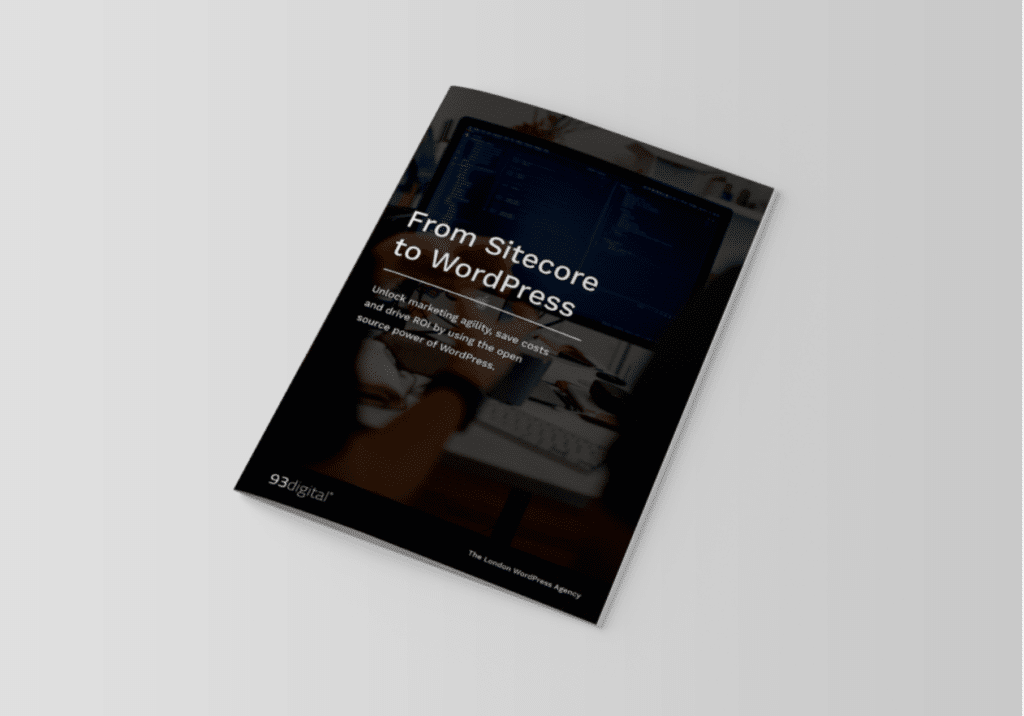
The marketing technology landscape looks nothing like it did just a few years ago. Put this together with the uncertain times we live in and huge shifts in how we as consumers and businesses both work and buy, and the next few years are going to be interesting.
In the uncertainty of modern times with budgets under scrutiny and isolation on the rise, we’ll explore how marketers can be empowered for success using technology but at the same time save costs.
Even before all the uncertainty, the role of the modern day marketer has been evolving at pace, becoming a technological and data driven discipline with a growing list of responsibilities. Making technology decisions as a marketer is hard.
This guide should help any marketer working with Sitecore to consider their marketing technology landscape for the years ahead. It should explore how ambitious marketers can use cutting edge technologies and the latest MarTech architectures to be empowered and to drive ROI.
Where there is uncertainty, there is also opportunity. It’s an exciting time to be a marketer, and even more so if you’re armed with an agile and flexible CMS like WordPress!
You can download this guide as a PDF here:
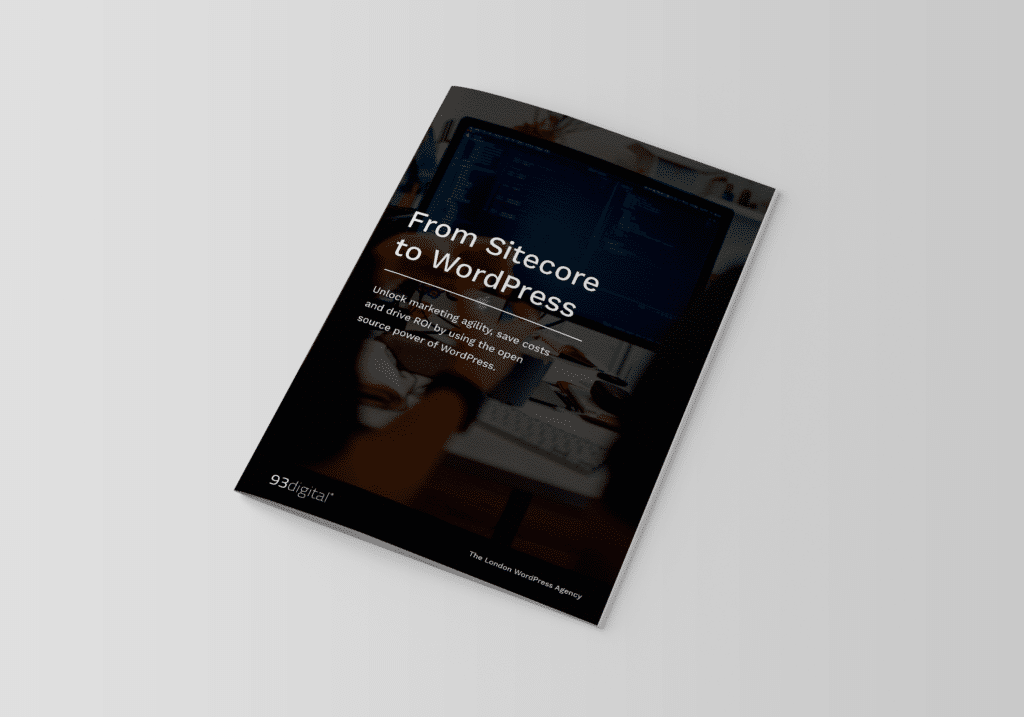
Moving from Sitecore to WordPress
DownloadSetting the Scene
Marketers need to embrace ways of working and tools that provide flexibility, scalability, ease of use, speed to market along with the data needed to make informed critical decisions.
In the last few years, we’ve engaged with multiple businesses looking to move away from rigid, expensive and inflexible CMS such as Sitecore (along with others such as Episerver and Kentico), over to the open source power of WordPress.
WordPress has grown from a simple blogging tool to a truly enterprise CMS, capable of sitting at the heart of advanced MarTech ecosystems whilst empowering marketers with speed, ease of use, flexibility and reduced costs.
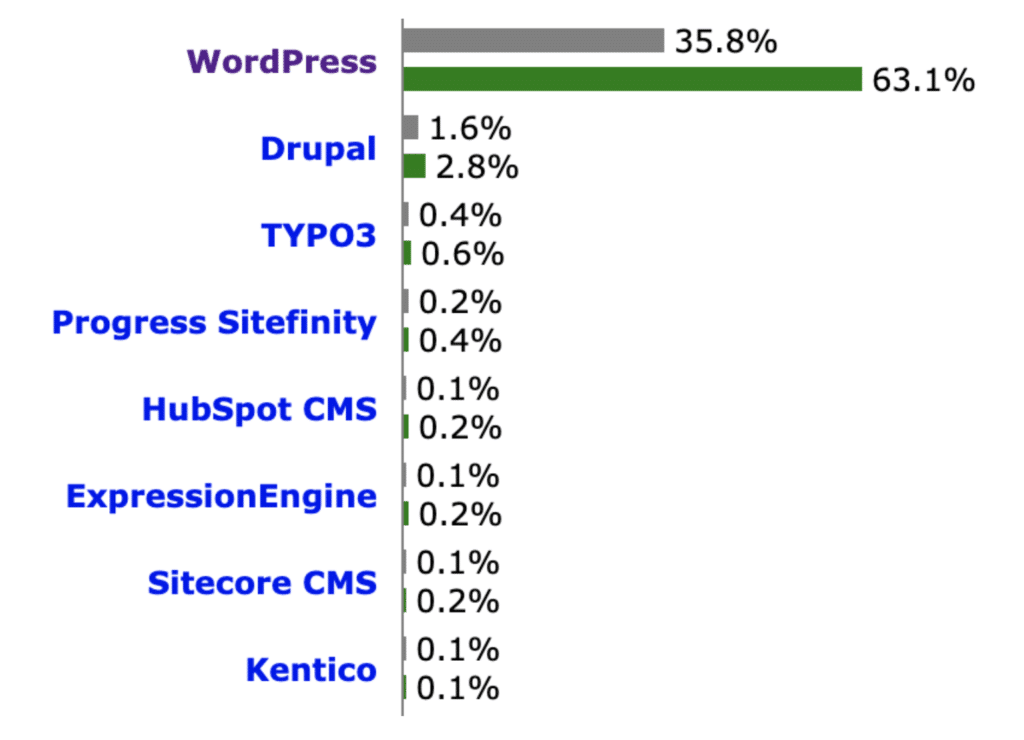
WordPress now powers 36.2% of the entire internet, giving it a 63% share of the CMS market. Comparatively, Sitecore has a 0.1% share of the CMS market. Now of course this number doesn’t mean much on it’s own – the majority of the WordPress sites that make up these numbers are not ‘enterprise’ and so can’t be compared to most Sitecore sites directly. But with WordPress having such a significant chunk of the CMS market, it would be wrong for any marketer not to at least reflect on why this is.
We’ll explore how WordPress can be a viable option over Sitecore in the rest of this guide, looking at marketing capabilities, security and scale, whilst also exploring a case study from an enterprise Sitecore to WordPress project we have delivered for a client.
Marketing Capabilities
We kick things off by looking at what WordPress is really capable of when compared to Sitecore.
Many of the businesses who have reached out to us looking to move to WordPress have realised that whilst it can be feature rich, Sitecore needs a fair amount of resource to get the most out of it. If they happen to be a relatively small marketing function (not uncommon even in big B2B businesses) then this often isn’t working for them. They can no longer justify the cost of an expensive license for lots of unused features.
It’s easy to be sold on lots of features, but actually putting them to use is not just about technology – it’s about people and process, and without both optimised you’re not going to get results.
Either way, this section of the guide should highlight that when delivered properly, WordPress can match or even outperform Sitecore on lots of features, and at a fraction of the cost.
CMS Flexibility
If I distilled down all the briefs we have received from enterprise marketers looking to move to WordPress, the most common complaint would probably look something like this:
“Our current CMS is so slow, clunky, and restrictive. It takes weeks to make changes and costs lots through our development agency. We can’t move fast enough. We really need more flexibility.”
Our mission statement as an agency is to ‘empower ambitious marketers to be successful’. We’ve built our proposition around the idea that if we hand you over a CMS, you should be set up to do what you need to do day to day. This means without having to go through as us an agency – you have all the tools you need to move fast and be successful.
And WordPress lends itself to that mission by its very nature.
The latest WordPress page editor, Gutenberg, gives marketers a modular, flexible ‘block’ based system for managing content, meaning you can move away from the locked down nature of Sitecore fields whilst also being able to ‘preview’ how content will look on the front end from within the CMS.
WordPress is a highly flexible and highly extendable framework when delivered by the right developers who understand an organisation’s marketing and content team structures and processes, and can scope a project appropriately.
Of course in some environments, we have to be careful. Absolute CMS flexibility can be a threat to stability and consistency for marketing and content teams. So there is a fine line between too much and too little flexibility when delivering WordPress as a CMS, and this is a balance we’ve helped many clients solve. We recognise that for marketing to scale with consistency and stability, we need to be careful about the user roles, permissions and workflows that we develop.
Ease of Use
It’s not uncommon for some very experienced marketers to get in touch with us these days already knowing they want to use WordPress as their CMS.
They’ve been using it for years in lots of other places, and have seen the power it gives their teams. So when they start a new job at a business held back by using Sitecore or another harder to use CMS, step one is to move to WordPress, and that’s when they get in touch with us.
Now we could probably write a small book about the various reasons that WordPress has grown to own such a big chunk of the market. But in summary, ease of use is a big driving factor.
The WordPress Dashboard offers a clean and simple user interface, with a user experience for editors that is self explanatory and often requires very little training. Our experience as an agency means when we deliver a project for a client, we think as much about the backend UX for editors as we do about the front end for visitors. This is key in empowering our clients for success.
Audit Trails & Workflows
One area of where WordPress has lagged behind some of the more traditionally enterprise CMS such as Sitecore is with audit trails and the ability to setup custom publishing workflows.
But there are solutions. Whilst not built into the WordPress core currently, there are a number of ways of keeping on top of activity in WordPress.
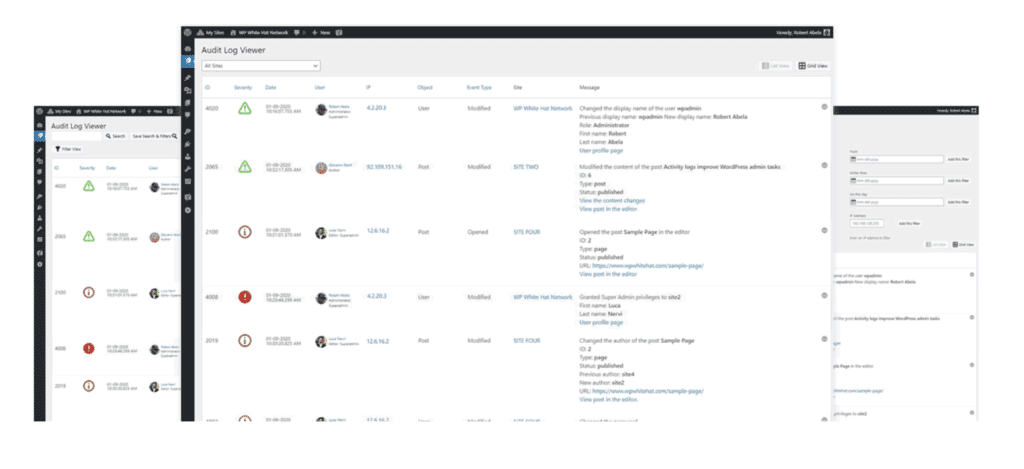
There are solutions such as the one displayed above that will allow you to track user activity within the CMS, so that you have the necessary compliance information if required.

There are also solutions such as Oasis Workflow, which allow WordPress to be extended with powerful workflow and editorial review processes that can be mapped out and modified visually.
User Roles & Permissions
Somewhat related to the above, being able to configure granular user permission is important for compliance, security, and processes. And this is something WordPress is very capable of supporting.
We follow stringent security best practices when delivering WordPress projects for our enterprise clients. We follow the ‘Principle of Least Privilege’ when configuring CMS permissions, a concept within computer science which states a user must be able to access only the information, settings or resources that are necessary for their legitimate purpose.
With this in mind, we can lock down the CMS to give individual users access only to what they need. For example, if you have a press team that only needs to publish and edit press releases, then we could set up their user accounts so this is the only thing they can do.
Not only does this make adoption of your new CMS easier for stakeholders by creating a streamlined and less overwhelming Dashboard for each user, but it also keeps things secure.
Integrations
The future of marketing technology is using best in class tools that are distributed but integrated via APIs and other methods – a ‘microservices’ approach to architecture.
Whilst Sitecore can give you a number of parts of a MarTech setup (data, analytics, marketing automation etc) under one roof, the reality is that there are so many solutions out there.
You’ve probably all seen Scott Brinker’s annual ‘Martech 5000’ which in 2019 actually had over 7,000 solutions on it (click on the image to see a bigger version):

The trend amongst our clients is moving to more cost effective but also better and more specialist MarTech products, which are individually the best at what they offer.
I’m a big fan of this on brand example below of a ‘MarTech Stack’ from Earth Networks, a B2B technology business in the meteorology space who use WordPress as their choice of website CMS.

You can see from the above that Earth Networks have decided to use a series of best in class MarTech products, including WordPress as a CMS but also HubSpot for marketing automation, Salesforce CRM, Google Tag Manager as well as a number of other tools to power their marketing.
This approach of connecting the best tools out there allows marketers to pick and choose individual products that meet their needs at the time, but also not be tied in long term. They have the flexibility needed to scale their MarTech as their business grows.
If for some reason you need to move from HubSpot to Pardot because it can integrate more closely with Salesforce, then you can unplug HubSpot and plugin in Pardot. Sure, there will be lots of background planning, but it’s not as if you are going to have to replatform your entire organisation away from Sitecore.
Marketing Automation & CRM
Nearly every project we have delivered in the B2B space has integrated with a marketing automation product such as HubSpot, Pardot, Marketo or Eloqua.
We’re well versed in best practices around how these products should be integrated and styled to offer a seamless UX with a client’s website, and are able to advise on use of gated content forms, landing pages and tracking scripts.
On some occasions we also integrate directly into CRMs along with marketing automation, so regularly work with Salesforce, Microsoft Dynamics, Pipedrive, Zoho and others.
Multilingual & Localisation
We’ve delivered a large number of Multilingual WordPress projects, and whilst this used to be an area that WordPress struggled with, there are a number of enterprise ready options for achieving both multilingual functionality and localised content.
Take for example our client Soldo, a fast growth FinTech scale up.

Soldo raised over $60m in Series B funding and came to us looking for a partner to unlock the website agility needed for global scaling of their business.
We’ve helped them deliver a scalable WordPress based CMS platform where they can deploy a copy of their site into a new country/language in just a matter of hours. This is an exciting use case of CMS agility in practice.
Multilingual is not easy and there are multiple approaches within WordPress, but we’ve been through it enough times to know how to approach it. If you want to explore the options or see more case studies, just let us know.
Personalisation
By partnering with WordPress DXP providers such as WP Engine, we can make use of their platform to personalise experiences in different ways.
For example, we can use their page caching system to ‘segment’ users during a website session. WP Engine has a great example of this on their own website.
Based on the information inputted by the user, we can then adjust different content modules around the site to personalise content based on user persona and interest area.

Using different technologies, we can also take IP based information such as location or even the name of the company itself to adapt content, personalise messaging and ultimately drive more engagement and more conversion.
There are a huge range of personalisation products on the market, many of which will integrate with WordPress in a number of ways. Website based personalisation is a complex area of digital marketing, and it’s often one of those things that is on a marketers ‘to do list’ but that they never get round to really embracing. The key is to start small and simple.
As well as using external solutions and products that can power personalisation in different ways, there are solutions that can work inside WordPress in a similar way to Sitecore’s personalised components.
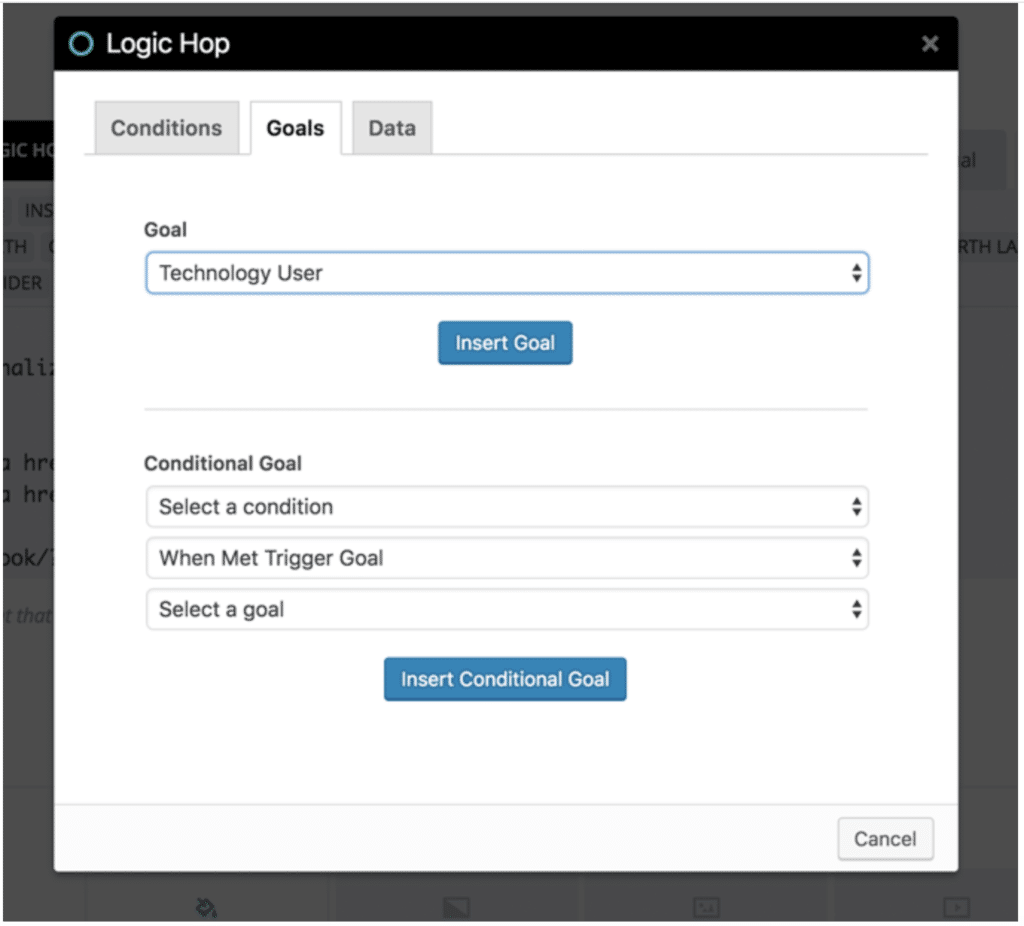
You can see from the image above how straightforward it is to create variations of content modules using a product like Logic Hop that extends WordPress with powerful personalisation capacity.
Using all kinds of inputs such as IP address, location, past behaviour, pages viewed, score, specific campaigns (UTM codes) and other inputs, we can personalise a WordPress site to optimise the user’s digital experience.
Speed
Speed is now a very important part of achieving digital marketing results, and an ever more important part of SEO too.
Issues such as poorly written code, inadequate hosting, caching problems and general configuration problems can all contribute to a slow running website, regardless of CMS.
Working with a specialist agency that has deep engineering knowledge of a certain platform is the best way of ensuring a truly optimised site, whether it’s Sitecore, WordPress or any other CMS.
If you’re interested, you can find out about our coding standards and best practices here, some of which help to contribute.
Away from coding best practices and a well coded website, there are other tools and technologies we can use such as caching and content delivery networks (CDNs) to ensure our client projects run smoothly.
SEO
WordPress is widely recognised as one of the most SEO friendly content management systems.
If SEO is an important channel for you, then the business case for a move to WordPress could be even stronger. WordPress offers naturally optimised permalink structures, well written HTML markup, image optimisation and extremely easy content management.
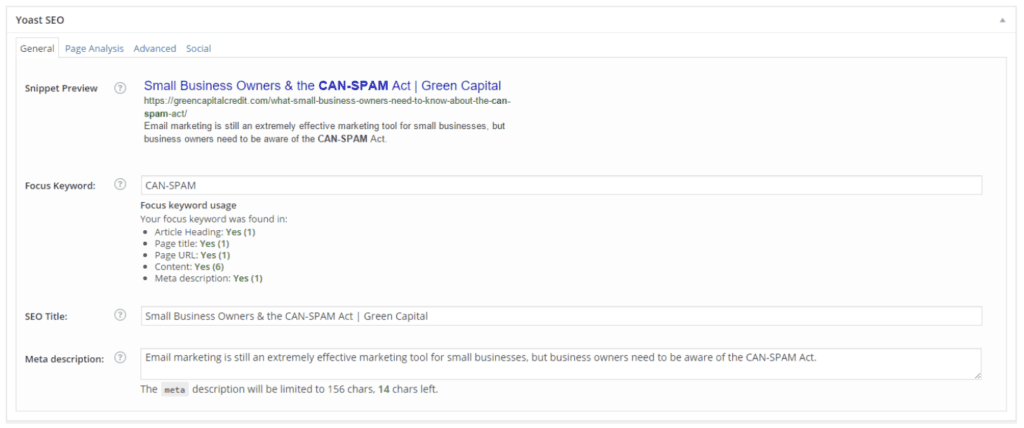
The WordPress CMS can be set up to give digital marketers or SEO consultants all the tools they need to really push search optimisation to its limits.
Conversion Optimisation
It’s extremely easy to set up all of the best known Conversion Optimisation tools to work on WordPress, including Optimizely, VWO, Google Optimize and others.
We typically recommend our clients use Google Tag Manager, and so easy tag management allows different products such as those used for Conversion Optimisation to be added to a WordPress site with ease.
Content Migration
Any of you who have been involved in a website redesign or development project before will know that content has the potential to throw your project off course in more ways than one.
From content auditing, to SEO redirects, to balancing UX, design and content requirements, to actually writing the words themselves – content is king, but has the potential to reign terror over your website project!
A critical part of a replatforming project is how existing content can be migrated. You might have hundreds or even thousands of posts in terms of news, blog and other resources, all of which need automatically migrating into WordPress.
On one recent project, the client’s old site was so unstable we had to write custom scripts that crawled the front end of their site one post at a time, scraped the content from the front end, manipulated it and then imported it into WordPress. And we had to process over 10,000 posts as part of the process. We learned a lot on that project, and it’s fair to say we’re up to most challenges when it comes to migrations.
When planning content migration, we follow an ‘ETL’ methodology: Extract, Transform, Load.
Extraction is where we export the content from your existing Sitecore CMS database. Transform is where we use scripts to reshape or modify the content structures if needed, therefore getting it ready for import into the new CMS database. And Load is where we import the content into the WordPress database.
All content migration processes will have an Extract and a Load phase – only some require a Transform phase too, and this is where some of the complexity can be found. How complex this might be depends on the structures of your existing website database and content, so the only really easy way to tell is by undertaking a content audit of your current site. This is something our development team would do in the discovery and definition phase at the start of all projects, to make sure we identify any risks and create a plan early on in the project.
Part of the process is also to remap old content to new content, including the necessary 301 redirects to ensure that when you launch your new site on WordPress, there are no negative SEO impacts. This is very important to get right.
Ecosystem
A massive part of the success of WordPress has been its ecosystem.
By this, I refer to the large system of developers, agencies, plugins, hosting partners and everyone or everything else that contributes to WordPress thriving.
Why is this important for you as a business? Well it provides the certainty that there is a large enough ecosystem of partners to help you implement WordPress safely and to the standards needed, and that you won’t be trapped working with only a small pool (or even just one) supplier. This in turn makes costs of support and development more competitive for WordPress than Sitecore (more about this later).
Not all ‘WordPress developers’ are made equal. Some so-called ‘developers’ really just setup templates for small businesses. Others, such as ourselves, specialise only in working with the enterprise, and our engineering team and processes reflect that.
Either way, there are no shortage of high quality and specialist partners to assist a business with its journey to flexible and agile WordPress.
This means the organisations that choose to adopt WordPress have flexibility in more ways than one.
Case Study
Zuken is a Japanese headquartered B2B enterprise software company that works with large global organisations on optimising their electrical and electronic engineering design processes and their related manufacturing challenges.
They were not getting the most out of Sitecore, didn’t feel like they were getting value for money and having to pay large amounts and wait for a long time to make changes to their Sitecore site. They needed the agility that WordPress could offer them, along with the significant cost savings.
After a two-day on-site discovery and definition kickoff at Zuken’s UK office in Bristol with global stakeholders from Japan, Germany & USA, we continued to plan the new website project to align with business objectives, mitigate risk and ensure results.
We delivered a UX led and strategic project that is fully multilingual and globally localised now built on WordPress site, and also featuring full integration with Adobe Marketo marketing automation.
You can view the full case study here.
Security, Scale & Infrastructure
Security
One of the biggest reasons WordPress occasionally gets overlooked in the enterprise is its perceived security issues.
Let’s all agree one thing: any dynamic website can be at risk of some kind of attack, regardless of the CMS.
WordPress powers over 36% of the entire internet at time of writing. That’s millions of websites. The reason WordPress often gets flack for security is that many of these sites are set up with a password of ‘password’, put on cheap £9.99 per month hosting, installed with loads of unaudited plugins written by any author, and then not updated for 3 years. And then people blame WordPress itself when their site gets hacked into. Security is as much about process and people as it is about technology – the same goes for all CMS.

WordPress Security Guide
DownloadWordPress is currently used by organisations like No 10 Downing Street, NASA, Sony, News UK, Microsoft, Amnesty International – the list could go on. Even whitehouse.gov runs on WordPress. Clearly if there was anything intrinsically insecure about WordPress in itself, none of these organisations would use WordPress.
Our clients come to us because we have the technical expertise to deliver WordPress securely, whilst ensuring that we follow best practices and implement guidelines around how to keep WordPress running smoothly and securely at scale. We’re used to hardening WordPress to get it ready for most situations.
Some of these measures include auditing plugins, consulting on hosting, restricting CMS accesses, hiding login pages, implementing two factor authentication and much more. If you’re interested in learning about how we deliver WordPress safely into high pressure environments, check out our dedicated WordPress Security Guide.
Enterprise Scalability
Generally speaking, B2B sites don’t go through as many aggressive ups and downs in traffic as many consumer focused sites might do, and on the whole are lower volume in overall traffic.
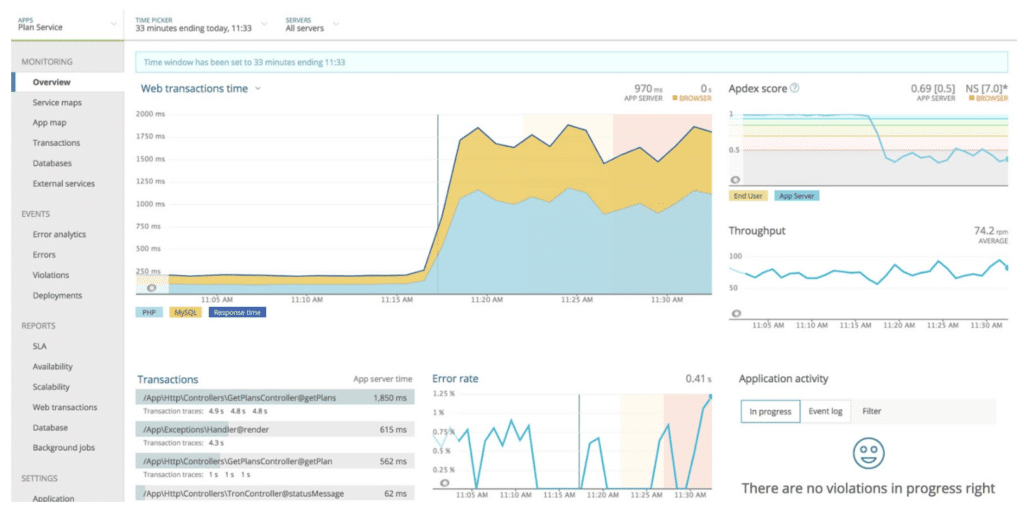
But being developed and setup to cater to anything that might be thrown at it is a key part of our process for any WordPress site.
From a development perspective, even subtle differences in how content is queried in a MySQL database can have a big impact on a site’s ability to scale when put under more demand. Experience and deep knowledge of WordPress as a platform are what will enable you to get the most out of WordPress.
It’s also possible to undertake load testing and deep dive into potential performance bottlenecks by using tools such as Application Performance Monitoring from New Relic alongside WordPress.
Hosting & Infrastructure
Of course the technology that WordPress sits on is a critical part of successful implementation.
As a marketer, we know it’s likely you will have to engage with other departments within your organisation to put your business case for using WordPress together. On this basis, it’s likely teams such as IT, compliance and procurement will want to understand the options around the hosting technology before giving the greenlight on your proposed WordPress solution.
Optimised hosting and infrastructure is key to ensuring safe, scalable and smooth running WordPress in enterprise environments and so this section is relevant to the above two on ‘Security’ and ‘Scalability’ also.
As an agency, we’re one of only 3 agencies in the UK to have achieved ‘Strategic Partner’ status with WP Engine, the leading WordPress hosting and digital experience platform (DXP).
WP Engine leads the market in this space, and our Strategic Partner status is recognition of our ability to partner with WP Engine on their most challenging projects and in support of their most important clients.
WP Engine provide a fully managed and optimised WordPress hosting platform, with first class round the clock support from specialists who know WordPress inside out.
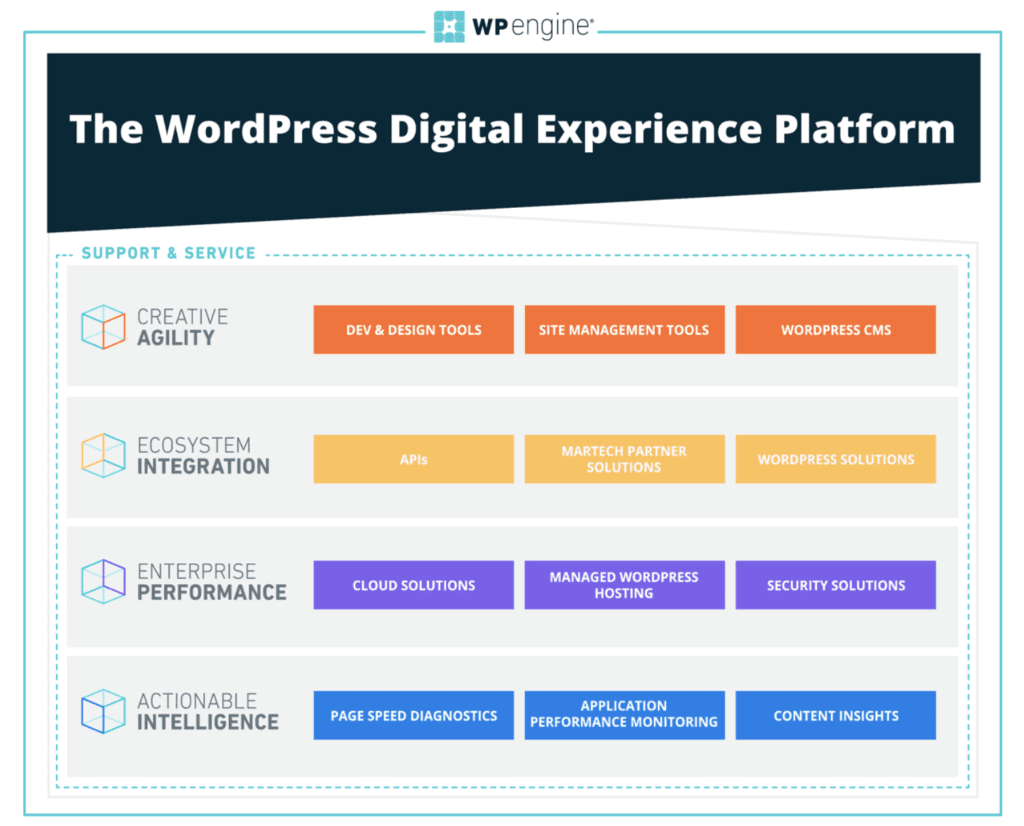
On top of this, their platform’s technology is optimised around WordPress as a CMS, because that’s the only type of site they host. So when it comes to speed, security and scalability, WP Engine leads on all fronts.
Also built into their platform are features such as automated daily backups, multiple staging environments, Git integration and even technology that can help developers such as ourselves deliver localised experiences for clients.
WP Engine is a highly valued partner to us, both for us to deliver projects and to work in partnership with for ongoing support of client sites. We thoroughly recommend exploring their platform.
Updates
Given that WordPress is an entirely open source product at its core, there are no license fees or limitations around receiving updates.
WordPress is driven forward by a Core Team of developers who contribute their time to ensuring the roadmap continues to move forward, and you will be able to receive free and ongoing security patches and bigger updates to WordPress for as long as you continue to use it.
You can read more about the WordPress Project Organisation here.
Costs – how much does Sitecore cost?
WordPress is nearly always going to be a more cost effective CMS than Sitecore.
As a framework, WordPress has a greater number of elements which are ‘ready to go’ than Sitecore, and so often the total number of hours that need to go into the development of a site would be less for WordPress than the same site built on Sitecore.
Generally speaking, a specialist WordPress agency is also going to generally cost less than a Sitecore specialist agency in terms of the hourly/daily rates used to cost a project. This will of course vary based on agency location, agency size, team structure, depth of specialism etc.
Ongoing support is therefore also going to cost less for a WordPress site based on the points above, but also considering that a marketing team should need to rely less on an agency for ongoing development thanks to having greater CMS agility and flexibility.
And then there is of course the fact that WordPress as a CMS is entirely free, so there are no license costs to use the WordPress CMS. Sitecore licenses of course depend on a number of factors, but whichever way you look at it WordPress is free. It also remains free, meaning that you won’t need to pay for regular license updates on an ongoing basis.
Overall this means more of your project budget can be spent on the things that really make an impact, such as deeper user research and user journey mapping, more UX prototyping & testing, greater intricacy of design, more dynamic front end experiences or greater CMS flexibility – the list could go on. Either way, more of your budget will be allocated to ROI focused activities.
Example 12 Month Total Cost of Ownership
Based on the above, below is a rough example of what a 12 month total cost of ownership could look like.
| WordPress | Sitecore | |
| License | £0 | £40,000 |
| Design & Build | £89,250 | £148,750 |
| Patches & Updates | £0 | £8,000 |
| Hosting (8 months) | £8,000 | £12,000 |
| Support & Maintenance (8 months) | £6,400 | £10,000 |
| Total 12 Month TCO: | £103,650 | £218,750 |
Some notes & assumptions:
- These are rough estimates, and costs will always vary based on project scope.
- Sitecore license costs are estimated (Sitecore do not share pricing publicly)
- This assumes a rough first year license cost just for Sitecore ‘Experience Manager’ (CMS product within Sitecore only). The full Sitecore ‘Experience Platform’ suite will cost significantly more.
- We’ve assumed a specialist WordPress agency is going to cost about 25% less than a specialist Sitecore agency in terms of hourly rate.
- We’ve assumed that a site built on Sitecore is going to need about 25% more man hours compared to the same site built on WordPress.
- This roughly assumes a 4 month initial ‘project’ followed by 8 months of ongoing support, maintenance and hosting. Some projects can of course be faster, some slower, depending on scope.
- This does not consider any budget for change requests/ad hoc development.
Summary
Hopefully this guide puts forward points for serious consideration of WordPress within your future marketing technology landscape, and explains how it can be delivered strategically, safely and at scale by specialists.
No CMS is perfect, and it will always come down to careful consideration of an individual organisation’s requirements to make the best choice. But WordPress can be a perfectly viable contender to Sitecore for lots of businesses.
At 93digital, we deliver digital strategy & consultancy, UX & design and WordPress development for a number of enterprise organisations, a small selection of which can be seen below:
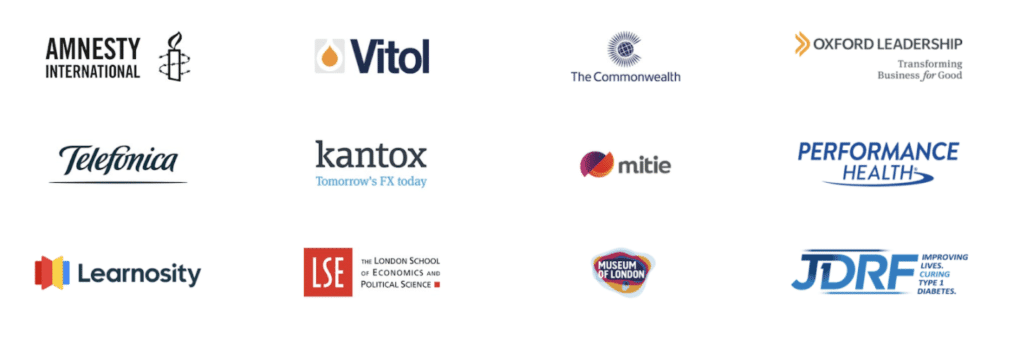
If you would like to talk through how we could help you, feel free to reach out here.

Internal day: April 2020

Meet the team: James
Let's Talk
Do you have a web design and build project coming up that you would like to talk about?